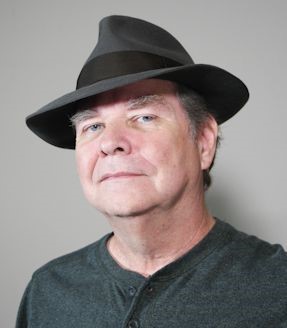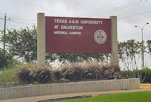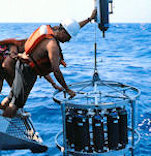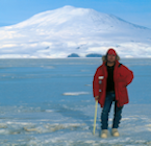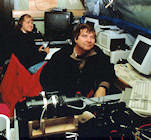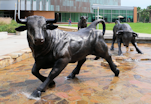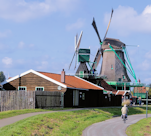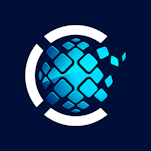Mini-Biography
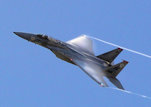

With the economic downturn of the late '80s and early '90s, TI was struggling. Most of my friends had degrees in computer science and were having trouble finding jobs. They consistently ran into
We can train a biologist, geologist, etc. to program easier, than we can teach you to understand biology…. They had skills and experience, but they were going back to school to acquire a domain in which to program. With extensive software development and operations experience, I decided to pursue my 5th-grade dream. I wanted to be a marine biologist and work with marine mammals. I changed my major from computer science to marine biology. Little did I know how many other people shared that vision and how difficult it was to achieve, but achieve it I did.
As a student at Texas A&M University at Galveston, I was able to participate in research with the marine mammal program. Some of the activities included recovering stranded dolphins, necropsies, writing analytical software, photo identification, boat handling, and operating oceanographic sampling equipment on research cruises. GulfCet was a survey of marine mammals in the Gulf of Mexico for the Minerals Management Service (MMS). My role included software development and system management duties for the Data Management Office (DMO), along with shipboard and sampling activities. Later, data from GulfCet served as a baseline in BP, Deepwater Horizon, oil spill assessments.
Upon graduation, Dr. Randall Davis provided the opportunity to participate, as the GIS Director, in the GulfCet II program; other responsibilities included software development and systems engineering. Subsequent projects were for the Office of Naval Research (ONR). Working as part of a team, we developed instrumentation for capturing the movement, behavior, and physiological data of marine animals then synchronizing it with video. At this point, I developed the software required for data integration and visualization, including the use of virtual reality. This work took us from California to Trinidad to the Antarctic. Science - Hunting Behavior of a Marine Mammal Beneath the Antarctic Fast Ice
Situations changed and resulted in a relocation to Dallas, TX. There I leveraged my previous experience and worked for Electronic Data Systems (EDS). As an Information Specialist, I participated in the development a Java/Oracle driven telecommunications ordering and fulfillment system targeted at Tier 2 firms. Moving from EDS, I went to work for Agency.com, where I had the privilege of participating in the dot-com boom and unfortunate bust.

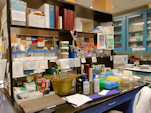
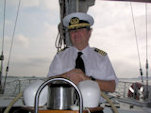

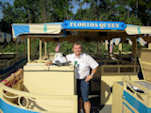
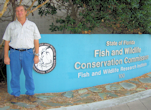
With a B.S. in Marine Biology, it was time to bring my credentials inline with my experience. I entered the graduate program at the University of South Florida (USF) and earned an M.S. in Management Information Systems (MIS). During my last semester, I had the privilege of being the Teaching Assistant (TA) for the programs' capstone course: Enterprise Information Systems Management. But it was the first class I took that set the direction for the rest of my masters program, and what came after graduation.
Information Technology is a very diverse and global endeavor. Offshoring, outsourcing, H1Bs, global customers, and infrastructure: this is just the beginning. I have had agile software development teams that consisted of individuals from Vietnam, India, Poland, Korea, and the U.S.A. getting this group to function as a team was incredibly difficult. I recognized these same challenges in the first class I took at USF: Managing International Cultural Differences. We covered topics such as moving staff, negotiations, and managing social and interpersonal relationships. But nothing on how this impacts IT. For instance an agile software development team. For each of my subsequent classes, I focused my research papers on how global culture affected the IT activities and responsibilities.
Upon graduation, I started a consulting firm focusing on the impact of international culture on the adoption and implementation of cloud computing. However, the scope quickly grew well beyond the effects culture had on cloud activities. It was evident that the impact of international culture extended to the entire IT organization. For instance, how do you make SCRUM work on a global basis? Why are our communications breaking down with our international partners? Business activities expanded to include the impact of world culture on organizational culture. Likewise, expansion occurred from IT teams to include scientific research teams. With a new focus, we needed a new name: Consolidated Reality, LLC. From many cultures, one reality.
It is amazing how the multi-cultural exposure from Walt Disney World has impacted my views on global culture. Also, what we learn about ourselves on a journey is enlightening. I am not my job. I am not a developer or project manager or entrepreneur. These roles do not define me. But they are reflections that provide insights as to who we are.
Today, I am the Principal Consultant for SeifertC2O, helping to bring order from the chaos of AI integration. Other activities include providing data management and technical support for Alzheimer's research. I am starting a Podcast talking about AI-related tips, risks, insights, evolution, and promise. We also discuss history, real, technical, and in the making. All of this would be meaningless without adding the context of philosophy. So join us on the journey. It starts now.
